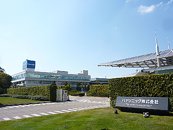Thursday, November 28th 2019
Panasonic Exits Silicon Manufacturing Business
Panasonic, an electronics manufacturing giant, has today sold its silicon manufacturing business, marking the end of an era of Japanese semiconductor manufacturing. Once a big player in silicon manufacturing scene, particularly in the '80s and '90s era when Japan's silicon output was huge, Panasonic was considered one of the main players in the silicon manufacturing business. However, due to some difficulties like operating a business with a loss of over $215 million yearly, and having to compete with Chinese and Taiwanese silicon manufacturing firms, Panasonic is selling its silicon production lines.
The subsidiary of Panasonic called "Semiconductors Solutions" is being sold to Nuvoton Technology Corporation, a semiconductor company that spun-off from Winbond Electronics Corporation in 2008, where Winbond still owns 61% stake in Nuvoton despite the spinoff. Additionally, Panasonic forecasts a 27% drop in operating profit for this physical year, with the declining semiconductor manufacturing business counted. The reasoning behind this sale is that the company plans to exit all declining businesses that also include LCD manufacturing, as Chinese alternative manufacturers are stiff competition for Panasonic when it comes to pricing and panel output.
Source:
TechXplore via Underfox(Twitter: @Underfox3)
The subsidiary of Panasonic called "Semiconductors Solutions" is being sold to Nuvoton Technology Corporation, a semiconductor company that spun-off from Winbond Electronics Corporation in 2008, where Winbond still owns 61% stake in Nuvoton despite the spinoff. Additionally, Panasonic forecasts a 27% drop in operating profit for this physical year, with the declining semiconductor manufacturing business counted. The reasoning behind this sale is that the company plans to exit all declining businesses that also include LCD manufacturing, as Chinese alternative manufacturers are stiff competition for Panasonic when it comes to pricing and panel output.

13 Comments on Panasonic Exits Silicon Manufacturing Business
It is sad to see Panasonic finally being murdered in LCD land though...
Dell 84th, Intel 135th.
AMD and Nvidia combined would be too small to get on the list.
It's not like you're expected to know what's happening to all large tech companies..., but sometimes it's just better not to write post like yours...
EDIT: Meh, global vs nonglobal Fortune 500. nvm. I am dumb.
Second: the so called "child benefit", that you're likely referring to, is fairly common throughout the developed world: en.wikipedia.org/wiki/Child_benefit
And they pay you for raising children, not having them. :)
qz.com/1646740/japan-wants-to-raise-its-fertility-rate-with-new-perks/We're also at a stage where a lot of people want "less stuff" so people limit what they buy in many western countries, which is going to hit some of these companies hard. Other parts of the world hasn't developed as quickly as I think was expected, at least not when it comes to peoples disposable income, so there's only so much market growth. Add to that all the kind integrated devices we have today and it's tough to compete, unless you make some exceptional things. Sony is in my opinion the only really competitive Japanese electronics company today, but at the same time, they're also a fairly pricey, more premium brand.
It's also hard for Japan to compete in terms of price when it comes to Made in Japan products and much of what was one made there is now outsourced to factory in Taiwan, Thailand, Vietnam or Malaysia and maybe to some degree, China.
Add to that the immense competition on one end from Samsung and the other end all the various Chinese brands and you're going to end up at a point where quality products might just not be enough to stay competitive.
The Japanese also a knack making "strange" devices, which costs a lot of money, but have limited appeal. How many of you would want this?
www.engadget.com/2019/11/18/sony-immersive-wearable-speaker-hands-on-SRS-WS1/
In Japan you get ~240 USD monthly for each child under under 16.
So each child will get 46080 USD from the government (possibly more as these benefits usually increase over time). The extra $2800 from the town is nice, but it's not a huge difference in the end.
Again, this is nothing special. Many countries have similar benefits - even those with positive population growth.
There is a mismatch between demand in different income groups and the cost of products for those same groups. Any China company can deliver. Japan has little more to offer but lacks capacity. And on top of that, Japanese companies never catered to these new mass markets, but rather to lower volume, higher end ones.